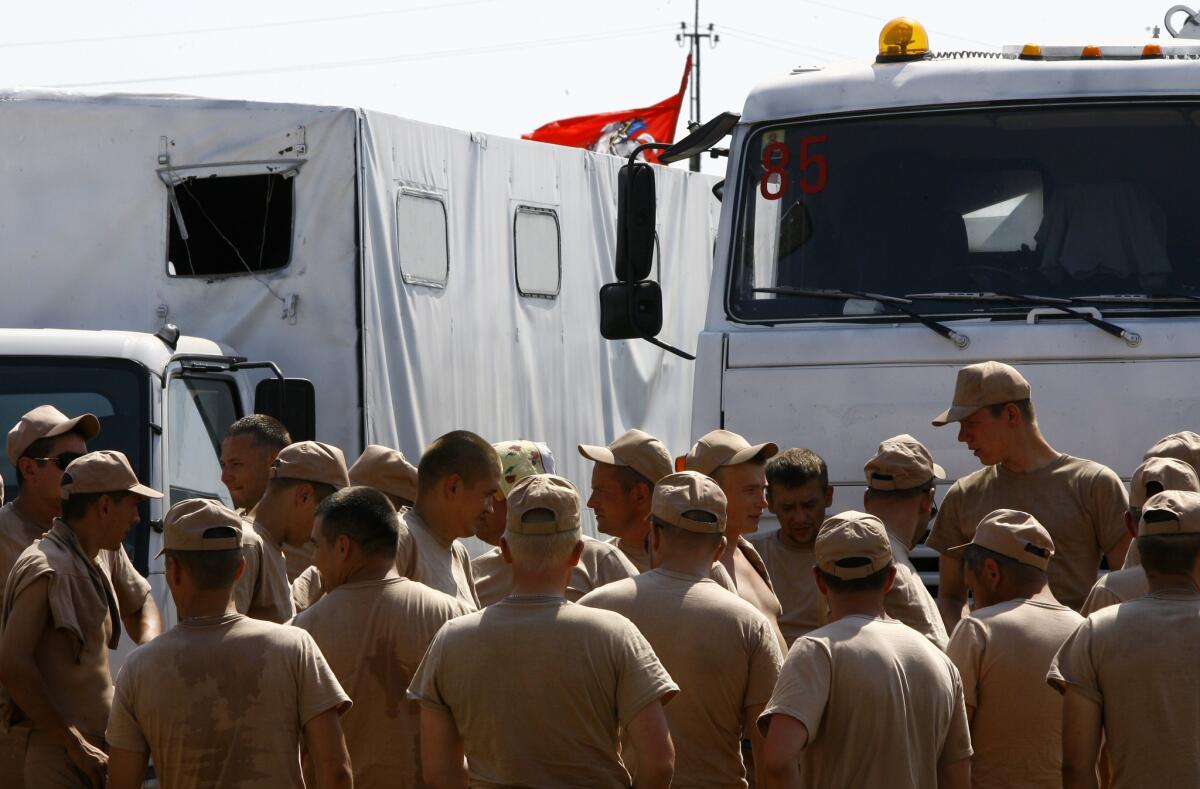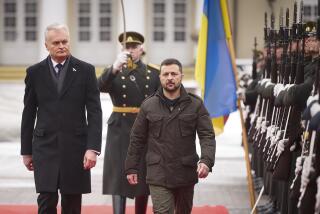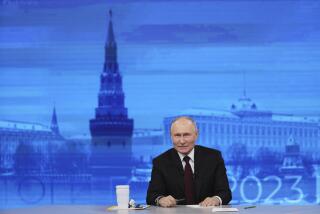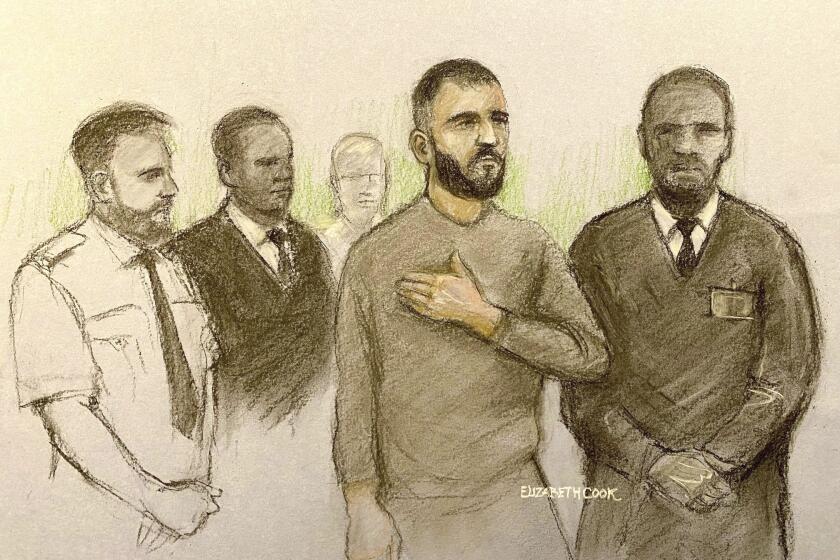Russian aid convoy for Ukraine takes turn for the confrontational

A Russian convoy carrying aid for civilians trapped in separatist-controlled Luhansk in eastern Ukraine diverted from its agreed route to the Ukrainian border Thursday, drawing warnings from Kiev that it will be blocked “with all the forces available” unless its cargo is first inspected.
Ukrainian officials and their Western allies have expressed concerns that the 280-vehicle humanitarian relief mission dispatched from Moscow on Tuesday could be attempting to smuggle military assistance and reinforcements for the struggling pro-Russia insurgency.
The Russian convoy deviated from the main route to Kharkiv, a major city in eastern Ukraine still under Kiev’s control, and headed southeast to Kamensk-Shakhtinsky, a Russian town just across the border from Ukraine, the Ukrinform news agency reported.
As the army-escorted convoy idled awaiting instructions from Moscow, Ukrainian troops captured the town of Novosvitlivsk, on the main road between the Russia-Ukraine border and insurgent-controlled Luhansk, the Kiev government said. That could allow Ukrainian troops to block the convoy if Moscow decides to send it into Ukraine without the agreement of Ukrainian authorities.
The cat-and-mouse game over the aid mission has intensified fears that Russian President Vladimir Putin may be preparing to invade eastern Ukraine to shore up the flagging separatist movement he is accused of instigating. Putin denies he is the force behind the rebellion, but many of its leaders have been Russian citizens, including special forces officers, and the armored vehicles and sophisticated anti-aircraft batteries in insurgent hands are also believed to have come from Russia.
Putin visited Crimea on Thursday and pledged to invest more than $19 billion in developing the strategic peninsula seized from Ukraine in February and annexed to Russia a month later. No country has recognized the border changes inflicted by force, but neither have Ukraine’s Western allies moved to reverse the seizure with any action stronger than economic sanctions.
In a speech to local lawmakers in Yalta, a Black Sea resort that lost half of its usual summer patronage this year following the annexation, Putin expressed a desire to build up Russia without “fencing itself off from the outside world,” the Kremlin news service reported. But Putin also said Russians should “not allow anyone to treat us with arrogance.”
Putin’s popularity has soared in Russia since the March 18 annexation of Crimea, home of Russia’s Black Sea fleet and a historically Russian area ceded to Ukraine in 1954 by Soviet leader Nikita S. Khrushchev. In spite of the economic sanctions that have boosted prices and cut off some Russians from travel to the West, most have responded with newfound pride to the Kremlin leader’s pledges to restore Russia to the global status it had during the Cold War.
The convoy standoff began Monday, when Putin announced he was sending aid to Luhansk, forcing Ukrainian President Petro Poroshenko to accept the mission or appear to be denying basic essentials to those caught in the embattled insurgent stronghold.
Ukrainian government approval was given on condition that the cargo be inspected by Ukrainian customs authorities at the border near Kharkiv, then offloaded to vehicles owned or leased by the International Committee of the Red Cross.
Anastasia Isyuk, an Red Cross spokeswoman in Geneva, said the relief agency had yet to receive information from Moscow about the cargo or assurances from either government that relief workers could travel safely through the war zones.
A statement Wednesday by Ukrainian Interior Minister Arsen Avakov that the convoy would not be allowed to travel through the Kharkiv region unless it was first inspected then escorted by the Red Cross prompted Russia’s state-run media to report that Ukraine had reneged on the delivery agreement and was blocking the convoy.
The convoy, which had been waiting near Voronezh, about 185 miles from the Ukraine border, then turned to the southeast, stopping at a tent camp in Kamensk-Shakhtinsk late Thursday.
A BBC television crew following the convoy reported via Twitter that it was unclear when or whether the convoy would attempt to cross into Ukraine via the separatist-controlled Izvaryne border post.
Ukrainian forces’ capture of Novosvitlivka could allow them to block the convoy, should Poroshenko’s government choose to risk the wrath of Russia and the Russian-speaking community in Luhansk awaiting relief.
More than 200,000 people remain in Luhansk, previously a city of 465,000, now encircled by Ukrainian government forces and lacking power, running water and communications in some areas.
Andriy Lysenko, a spokesman for Ukraine’s National Security and Defense Council, warned at a news conference in Kiev on Thursday that any attempt by the convoy to enter Ukraine without government consent “will be blocked with all the forces available.”
Ukrainian Prime Minister Arseny Yatsenyuk said in Kiev that the government now has about 50,000 troops deployed to recover the separatist-seized territory.
Special correspondent Isabel Gorst in Moscow contributed to this report.
Follow @cjwilliamslat for the latest international news 24/7
More to Read
Start your day right
Sign up for Essential California for news, features and recommendations from the L.A. Times and beyond in your inbox six days a week.
You may occasionally receive promotional content from the Los Angeles Times.







